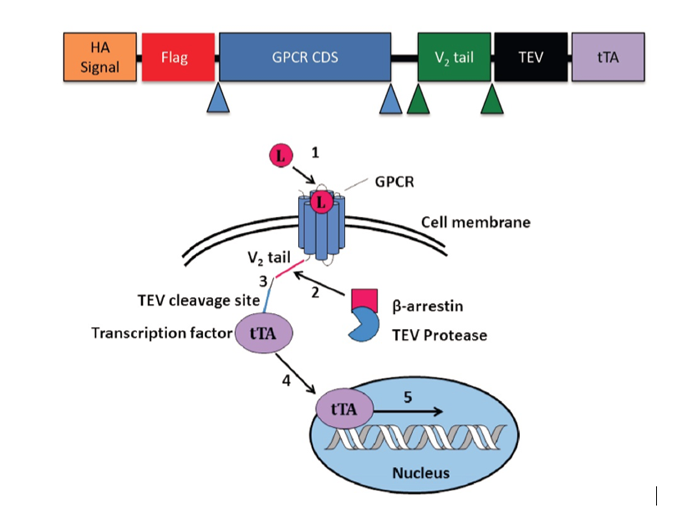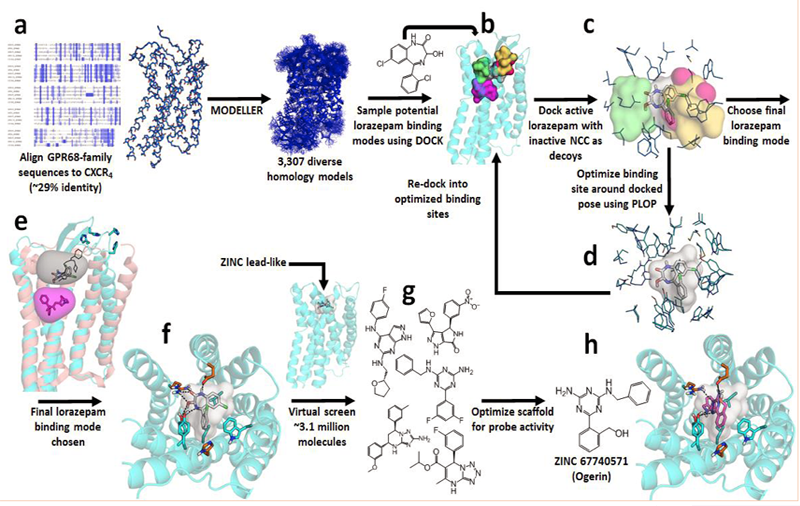
Technology: Presto-TANGO GPCR assay for high-throughput screening
-
Bryan Roth, M.D., Ph.D.
Michael Hooker Distinguished Professor of Protein Therapeutics and Translational Proteomics
Department of Pharmacology
School of Medicine
University of North Carolina, Chapel Hill - Brian Shoichet, Ph.D.
Professor Department of Pharmaceutical Chemistry
University of California, San Francisco
Overview
G-protein coupled receptors (GPCRs) represent the single largest target class in the druggable genome (Roth, B.L., Kroeze, W.K., The Journal of Biological Chemisty, 290, 19471-19477, 2015) both for currently approved drugs as well as for drugs in development. Of the non-olfactory GPCRs — which number nearly 400 (Fredriksson, R. & Schioth, H. B., Molecular pharmacology, 67, 1414-1425, 2005) — nearly 50% represented understudied and/or orphan GPCRs (oGPCRs) (Roth, B.L., Kroeze, W.K., The Journal of Biological Chemisty, 290, 19471-19477, 2015). Most of these oGPCRs as well as many well-studied GPCRs lack chemical probes and/or tool-like compounds (see (Arrowsmith, C. H.et al., Nature Chemical Biology 11, 536-541, 2015) for recent discussion of what constitutes a chemical probe) with which to interrogate them (Kroeze, W. K.et al. Nature structural and molecular biology 22, 362-369, 2015, Huang, X. P.et al., Nature, 527, 477-483, 2015). Over the last two years we have devised physical (Kroeze, W. K.et al. Nature structural and molecular biology 22, 362-369, 2015, Huang, X. P.et al., Nature, 527, 477-483, 2015) and computational (Huang, X. P.et al., Nature, 527, 477-483, 2015) approaches designed to provide unbiased screening platforms to identify molecular perturbants of GPCR activity on a near genome-wide level (Kroeze, W. K.et al. A Nature structural and molecular biology 22, 362-369, 2015). These platforms—which were generated as ‘open-source’ resources to the scientific community (https://www.addgene.org/kits/roth-gpcr-presto-tango/, http://blaster.docking.org/ , http ://zinc15.dock.org/ )—provide facile approaches for the discovery of small molecule and genomic modulators of GPCR function and signaling. Using these approaches we have recently identified positive and negative allosteric modulator probes for the oGPCRs PGR68 and GPR65 (Huang, X. P.et al., Nature, 527, 477-483, 2015) and have made the GPR68 probe (‘Ogerin’) as well as control compounds available via Sigma Chemical Company (http://www.sigmaaldrich.com/catalog/product/sigma/sml1482?lang=en®ion=US). Additionally, we have identified small molecule probes for several other oGPCRs (in preparation). In conclusion, we have devised scalable and near genome-wide computational and physical screening approaches for interrogating the druggable GPCR-ome. We have reduced these platforms to practice and have made them available to the general scientific community.
Flowchart of technology:

Flowchart of Docking:

Scroll

